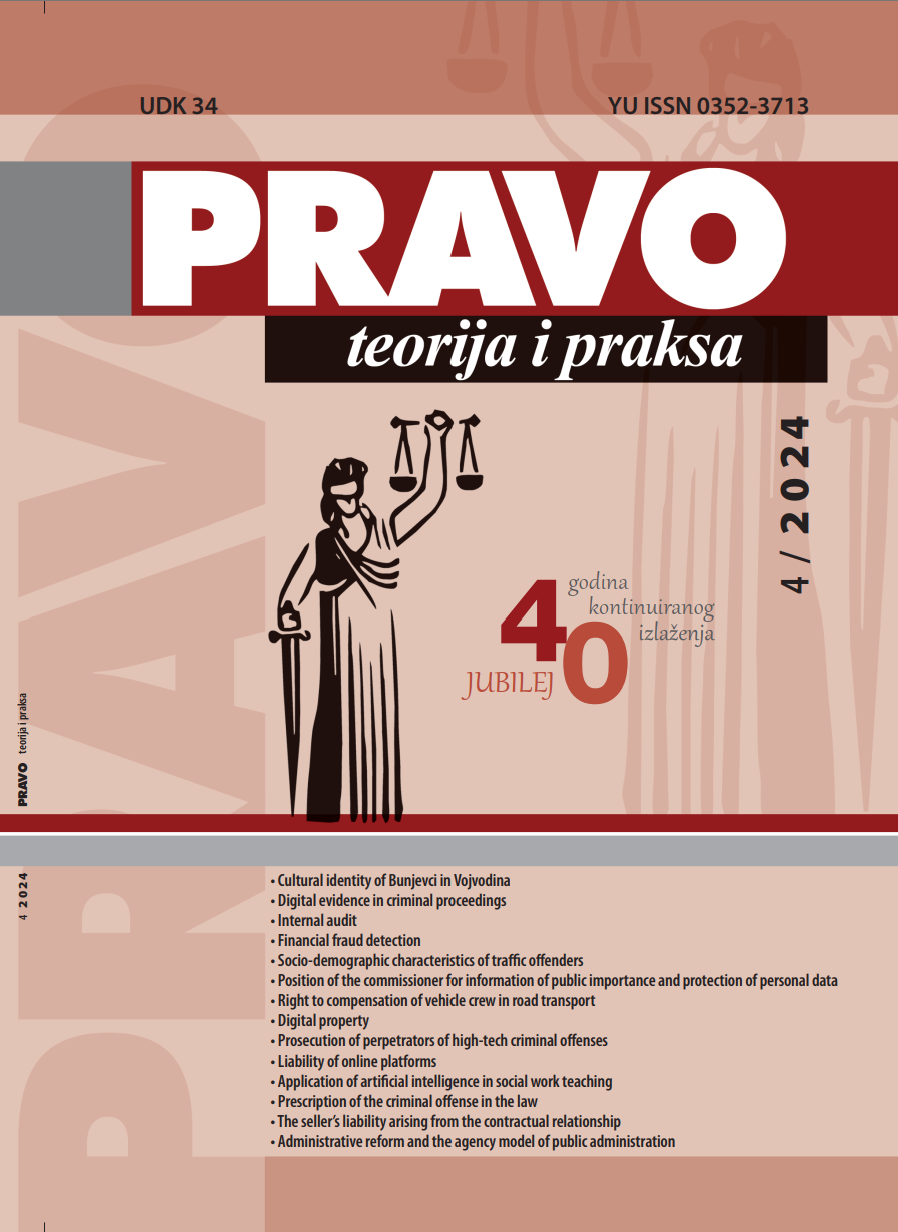DIGITAL EVIDENCE IN CRIMINAL PROCEEDINGS – CHALLENGES AND SOLUTIONS
DIGITAL EVIDENCE IN CRIMINAL PROCEEDINGS – CHALLENGES AND SOLUTIONS
Author(s): Jelena Matijašević, Nenad Bingulac, Darko MarinkovićSubject(s): Criminal Law
Published by: Pravni fakultet za privredu i pravosuđe u Novom Sadu
Keywords: digital evidence; criminal law; criminal procedure; European legislation; forensic analysis
Summary/Abstract: In the last decade, digital evidence in criminal proceedings has become a key tool in modern forensic investigation, with the help of which it is possible to identify, analyze and verify information that can be crucial for making a decision in court proceedings. Digital data, through the perception of various forms of electronic records, are increasingly becoming the basic evidence in criminal cases, and because of this, no distinction is made between existing material evidence and modern digital evidence. In this research, the importance of digital evidence, its advantages and challenges in collection and processing, as well as the legal and ethical aspects of its use in criminal proceedings were pointed out and indicated. The importance of the methodological approach in the forensic analysis of digital evidence was also pointed out, all in order to achieve the admissibility of digital evidence before a criminal court. The challenges and opportunities presented by this evidence are drawn throughout the research and pointed out. The hypothesis of this research is contained in its title and refers precisely to controversial issues and the legislative application of digital evidence in criminal proceedings. The aim of the work is to consider this topic by looking at the new regulation and directive that have been passed and will only be adopted in 2026, but in principle to consider the issue of digital evidence through practice because this topic remains crucial for the further development of the judicial system in the digital age. During the writing of this research, an analytical method was used in order to consider the legislation of the European Union, and make a comparison with the domestic legislation. Then, the normative method was used when considering the criminal procedure and defining digital evidence, and certainly the deductive method was also used.
Journal: Pravo teorija i praksa
- Issue Year: 41/2024
- Issue No: 4
- Page Range: 18-33
- Page Count: 16
- Language: English

